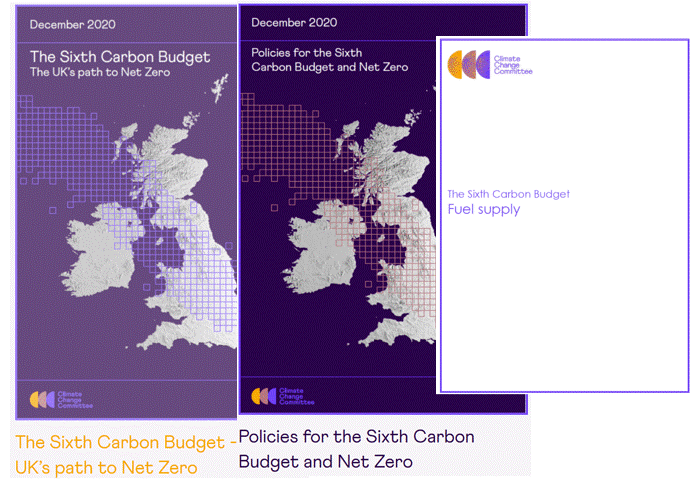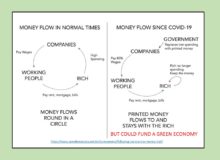Quick Links to switch to low carbon electricity:
Go to Green Energy Market (GEM) and choose one of three options:
- The Big Clean Switch which aims at only supporting 100% renewable electricity
- Homebox which has a green energy filter on its energy page
- Direct to Octopus which has several innovative tariffs to increase the UKs supply of renewables (see below)
Or try TheSwitch, which has good explanations about green electricity.
But Buyers Beware!
See below to be aware of when green is green
Which electricity suppliers are really Green?
Ideally, every time someone switches to ‘green’ electricity, more 100% renewable electricity is installed in the UK, so less fossil fuel or nuclear is needed. But it is not so simple and Which has a good explanation in How green is your energy tariff? Sept 2019.
Buyers Beware of 100% renewable claims:
Most suppliers top up their volumes of 100% renewable electricity by buying cheap ‘Renewable Energy Guarantee of Origin’ certificates (REGOs), even where the electricity behind the certificates has been sold elsewhere. This schematic from Regen explains the difference between real fuel mixes and claimed mixes.
 Green Energy has an in depth explanation in Renewable energy in Europe of how some suppliers avoided up to £126m contributions to Feed-in Tariffs and Contracts for Difference buying buying cheap European ‘Guarantees of Origin (GoOs)’ thus reducing new renewable capacity and misleading customers who want to buy green.
Green Energy has an in depth explanation in Renewable energy in Europe of how some suppliers avoided up to £126m contributions to Feed-in Tariffs and Contracts for Difference buying buying cheap European ‘Guarantees of Origin (GoOs)’ thus reducing new renewable capacity and misleading customers who want to buy green.
Which’s How Green is your Energy Tariff? article has a table of the suppliers that claimed to have 100% renewable tariffs (in Sept 2019), identifying % of electricity that is renewable overall, whether they own renewable generation and whether they buy direct from generators instead of on the open market.
Which only listed Ecotricity and Good Energy as providing the same amount of 100% renewable electricity to the grid as customers buy, though it did not engage with Green Energy who explain here that they do too.
Fuel Mixes
To compare carbon intensity and cost of each electricity source in depth go to Fuel for UK Electricity.
Energy companies are obliged to publish their ‘fuel mix’, but these can be very difficult to find on their web sites. The official fuel disclosure table at ElectricityInfo.org is muddied as suppliers are allowed to claim kWh as renewable, even where the purchased REGOs relate to electricity sold elsewhere and the actual electricity has been bought from a high carbon source.
Electricity coming from the Grid into your home will always be a mixture from all the generation sources in the UK, whoever you pay for the service. However, by choosing an energy company that only buys green electricity the amount of clean power that is generated will increase and electricity from ‘dirty’ sources will decrease.
Below are links to the ‘big six’ suppliers who buy electricity from coal and nuclear and the few who can be called genuinely green. Note that the information here is a guide, but you need to satisfy yourself that you are switching on the latest information.
‘Keep the Coal in the Hole’
If you want to boycott electricity generated from the dirtiest source Coal, you can choose a provider that does not buy power originating from Coal.
Of the big six energy companies the mandatory reporting for the 2019 and 2020 disclosure years at Electricityinfo shows the percentage of their electricity originating from Coal were:
- nPower @4.8% (0% for green tariffs, as coal volume moved to the non green tariffs)
- Scottish Power @ 4% (0% for green tariffs, as coal volume moved to the non green tariffs)
- SSE @ 4% (but the link here says 0%)
- EDF Energy @ 3.5% (9.1% for non green tariffs)
- e.on @2.6% (5% for business customers)
- British Gas @ 0%
Electricity from coal has a carbon intensity of 740gCo2eq/kWh compared with 18gCo2eq/kWh for large scale solar. And coal generation was an average of 3.9% across the UK at that time.
Want to discourage Nuclear?
See Nuclear – A Toxic Time Capsule? for information of the costs and risks of UK Nuclear.
“The technology is incapable of making a difference in the time window that remains to meet the climate targets agreed at the Paris Conference……. Generations to come will have to repay the enormous cost of building Nuclear plants, whilst living with the costs and risks of toxic waste.”
Of the big six energy companies the mandatory reporting for the 2019 and 2020 disclosure years at Electricityinfo shows the percentage of their electricity originating from Nuclear were:
- EDF Energy @ 66.6% (0% for green tariffs, 100% for non green tariffs)
- British Gas @ 24% (0% for green tariffs, 30% for non green)
- nPower @6.2% (0% for green tariffs, 8.2% for non green tariffs)
- Scottish Power @ 6% (0% for green tariffs, 7% for non green tariffs)
- SSE @ 4% (but the link here says 0%)
- e.on @3.5% (but this link 0% if REGO option chosen, else 8%)
against an average of 16.6% Nuclear for the UK in this period.
Want to buy as much renewable energy as possible?
Using the research by Which and the latest mandatory disclosures, carbon/ renewable options can be divided into ones where the supplier owns renewable generation; buys direct from generators or just has a % of electricity that is renewable augmented by REGOs where the electricity may have been sold elsewhere.
Suppliers that own renewable generation and only offer green tariffs
- Good Energy say that their energy comes from certified renewables such as sunshine, wind, water and Biogen, and were investing in the Swansea Bay Tidal Lagoon. Good Energy owns and operates six solar farms and two wind farms, has a community of over 1,600 independent generators across the UK, including local farmers, community energy schemes and sustainable businesses
- Green Energy UK uses “the power of falling water, the sun, the wind, and organic waste material” and are “always looking for independent, renewable energy generators.” Green Energy also has a tariff using EKO certification “set by EKOenergy, the international, not-for-profit ecolabel for electricity and gas. It means the energy is generated in locations ensuring marine and bird habitats are safeguarded, plus it supports renewable energy projects around the world.“
- Ecotricity shows that it’s 100% renewable electricity consists of 55.82% offshore wind, 41.60% onshore wind, Hydro 2.07%, Solar 0.51%
‘Greened Up’ electricity suppliers declared as renewable (ie cannot move other sources into non green figures)
The Which table has 13 suppliers who claim 100% renewable sources (some no longer in business)
Octopus is pioneering innovations like ‘Big Switch On’ where customers are PAID to use energy when there is a surplus, Vehicle2Grid charging, where electric vehicle owners charge on a cheaper tariff overnight, use their vehicle and then discharge their batteries at the peak evening time and ‘Agile Octopus’ where customers know when half hour rates are low and can shift their use till then.
Octopus also backs up the electricity for Ripple Energy, where customers invest directly in new Wind capacity relating to the electricity they use.
Want to generate your own renewable electricity?
To steer completely clear of fossil fuels and nuclear sources you would need to generate all your own electricity. See Energy Savings Trust for information on technologies and incentives.



